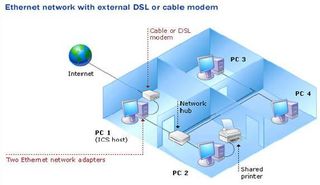Full Power: NVIDIA Attacks With nForce2
UltraATA/133 - Soon To Be Outdated?
As is appropriate for a new chipset, the fastest hard disk interface, UltraATA/133, is also included. Currently, only Maxtor has hard disks for this new standard in their program, and we expect that Seagate and Western Digital will not be selling UltraATA/133 hard drives at all. The reason for this is simple: a majority of the manufacturers, including Intel, have decided against UltraATA/133. This is not meant as a blockade, but rather, is supposed to expedite the introduction of UltraATA/133's long-awaited successor, Serial-ATA.
We've already received the first controllers, but we still have to wait a few weeks for the new hard disks. Serial-ATA brings you bandwidths of up to 150 MB/s (although half of today's hard disks can't even make use of even half of its potential), and it means getting rid of those impractical and touchy flat cables. As implied by the name, Serial ATA does away with parallel operation, so it only needs a handful of wires. Moreover, there's much less chance of electrical interference. Without the flat cable, it is also easier to ensure proper air circulation in the PC case.
Even if UltraATA/133 will be perfectly sufficient for the time being, it is still curious as to why NVIDIA, for all its apparent perfectionism, didn't go directly to integration of Serial ATA in the chipset.
Two Network Controllers (Optional), Thanks To DualNet
Here, NVIDIA offers a feature that might not seem to make much sense at first glance, namely DualNet, provided by the MCP-T. As the name suggests, DualNet consists of two network controllers. Upon closer scrutiny, this proves to be a welcome feature. Because the traditional modem is being replaced by more modern technologies, such as DSL, a network card is pretty much indispensable these days. However, a single interface is only sufficient if the PC is to be connected to either the Internet or a a local network, but not both. If you need to connect the PC to both, then you definitely need a second port.

In any case, from a financial point of view, integrating a second network port makes sense, because it only costs you a few dollars per port. Also, the nForce2 MCP-T allows PCs to function directly as a gateway between two networks - regardless of whether one is LAN and the other is the Internet, or if both are LAN. In this case, a PC equipped with this feature could function as a server for two autonomous networks, taking on the corresponding routing functions. A configuration with a third network card on the PCI bus is also possible, if you want to connect two networks to the Internet, for instance. In short, there's a wide range of possibilities with this feature.
Stay on the Cutting Edge
Join the experts who read Tom's Hardware for the inside track on enthusiast PC tech news — and have for over 25 years. We'll send breaking news and in-depth reviews of CPUs, GPUs, AI, maker hardware and more straight to your inbox.
Current page: UltraATA/133 - Soon To Be Outdated?
Prev Page Southbridge: MCP And MCP-T Next Page HyperTransport And StreamThruMost Popular

